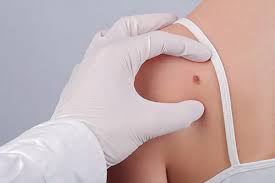Mohs Surgery is a precise and effective procedure used to treat certain types of skin cancer while preserving as much healthy tissue as possible. Performed by specially trained dermatologic surgeons, this technique involves removing thin layers of skin and examining them under a microscope until no cancer cells remain. Here’s more information on how Mohs procedure works:
What Is Mohs Surgery?
Mohs surgery, also known as Mohs micrographic surgery, employs a unique approach to removing skin cancer layer by layer. The surgeon removes visible cancer tissue and immediately examines it under a microscope in an on-site laboratory. The process allows for real-time evaluation of tissue margins to determine if cancer cells remain.
Mohs procedure differs from traditional surgery because it provides immediate feedback about cancer removal. Surgeons can identify exactly where cancer cells exist and remove only the affected tissue. This helps preserve healthy skin while making sure all cancer cells are eliminated.
When Is the Procedure Recommended?
Mohs surgery is valuable in specific cases. The procedure is usually recommended for the following scenarios:
- Cancers located in areas where preserving healthy tissue is fundamental, such as the face, ears, hands, feet, and genitals.
- Skin cancers that have a high risk of recurrence or have already recurred after previous treatment.
- Tumors with indistinct borders that are difficult to define.
- Cancers that are large, aggressive, or growing rapidly.
- Skin cancers in patients with weakened immune systems.
This method is designed to address challenging cases of skin cancer, making it a reliable option for achieving effective treatment while minimizing tissue loss.
How Does the Procedure Work?
Mohs procedure begins with local anesthesia to numb the treatment area completely. Patients remain awake and comfortable throughout the surgery, which takes several hours to complete. The surgeon starts by removing the visible portion of the cancerous lesion along with a thin layer of surrounding tissue.
After tissue removal, the surgeon maps and processes the specimen in the on-site laboratory. The tissue gets examined under a microscope to check all edges for remaining cancer cells. If cancer cells appear at any margin, the surgeon removes more tissue from that specific area only. This process continues until microscopic examination shows clear margins with no cancer cells present. The surgeon then closes the surgical site using appropriate techniques based on the wound size and location.
What Happens After Mohs Surgery?
Recovery from Mohs surgery involves managing a surgical wound while it heals over several weeks. Patients receive specific instructions about wound care, including how to clean the area and change bandages properly. Following these guidelines helps promote proper healing and reduces the risk of complications.
Most people experience minimal discomfort after the procedure and can return to normal activities within a few days. Patients should avoid strenuous activities that may strain the surgical site during the initial healing period. Sun protection becomes helpful for the treated area during recovery.
Follow-up appointments allow the surgeon to monitor healing progress and address concerns. The surgical site will gradually improve in appearance over several months as the healing process continues. Patients should contact their doctor if they notice signs of infection or other complications during recovery.
Schedule Your Mohs Surgery Consultation
Mohs surgery provides an effective treatment option for several types of skin cancer with excellent cure rates and tissue preservation. The procedure’s precision makes it valuable for cancers in cosmetically sensitive areas. If you have been diagnosed with skin cancer or suspect you may have a concerning skin lesion, contact a qualified dermatologist near you to schedule a consultation today.





